Asteroid is a rocky or metallic object smaller than a planet that orbits a star. Astronomers have discovered asteroid belts around stars other than the sun. This article, however, will discuss only asteroids in our own solar system.
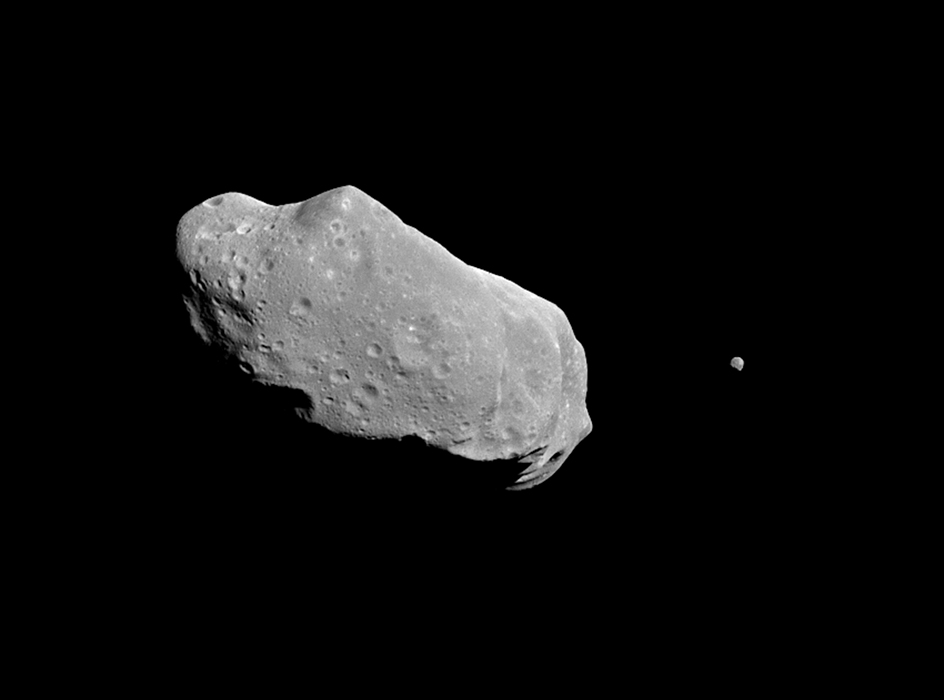
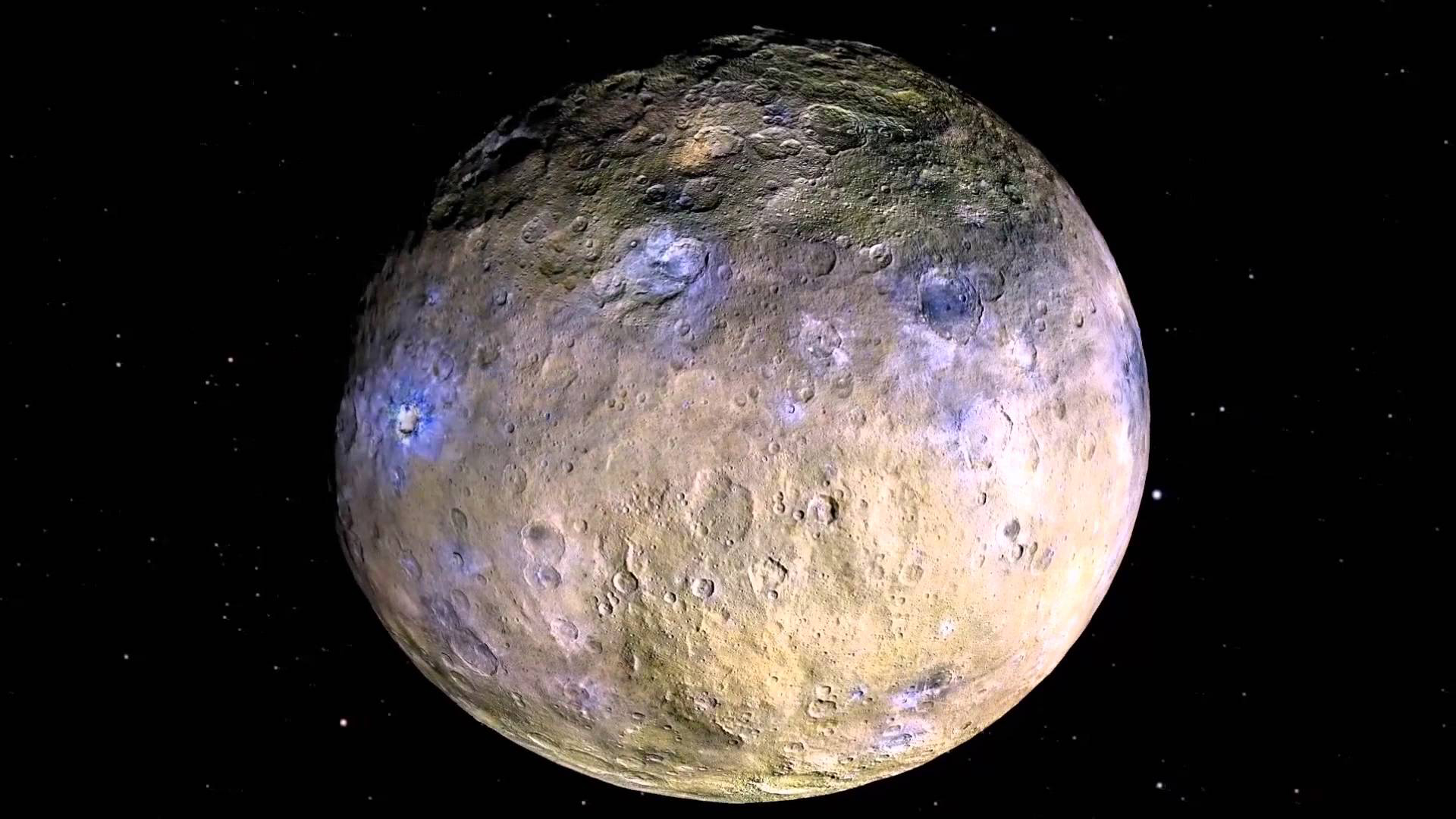
Most asteroids orbit the sun between the orbits of Mars and Jupiter. This region is known as the Main Belt. Millions of asteroids may exist. Astronomers think that most of them measure less than 6 miles (10 kilometers) in diameter. The majority of asteroids have a rocky composition. Some consist of metal or a mixture of metal and rock.
People sometimes call the asteroids minor planets. That term has no formal definition in astronomy, however. The International Astronomical Union (IAU) is a widely recognized authority in naming heavenly bodies. According to the IAU, no asteroid is large enough to be considered a planet. The IAU classifies Ceres, the largest asteroid, as a dwarf planet.
Scientists think that asteroids consist of material left over from the formation of the solar system. Such processes as erosion and volcanic activity have altered the planets and moons. But much of the material in asteroids is almost unchanged. Much of our knowledge of asteroids comes from studying meteorites, pieces of matter that have fallen to Earth from asteroids.
Sizes and shapes.
Ceres’s longest diameter measures 605 miles (975 kilometers). Ceres makes up more than one-fourth of the total mass (amount of matter) of the Main Belt asteroids. The next largest asteroids are Pallas and Vesta. Each stretches slightly over 300 miles (500 kilometers) in diameter. The tiniest asteroids may be pebble-sized. They would be too small to be seen by Earth-based telescopes.
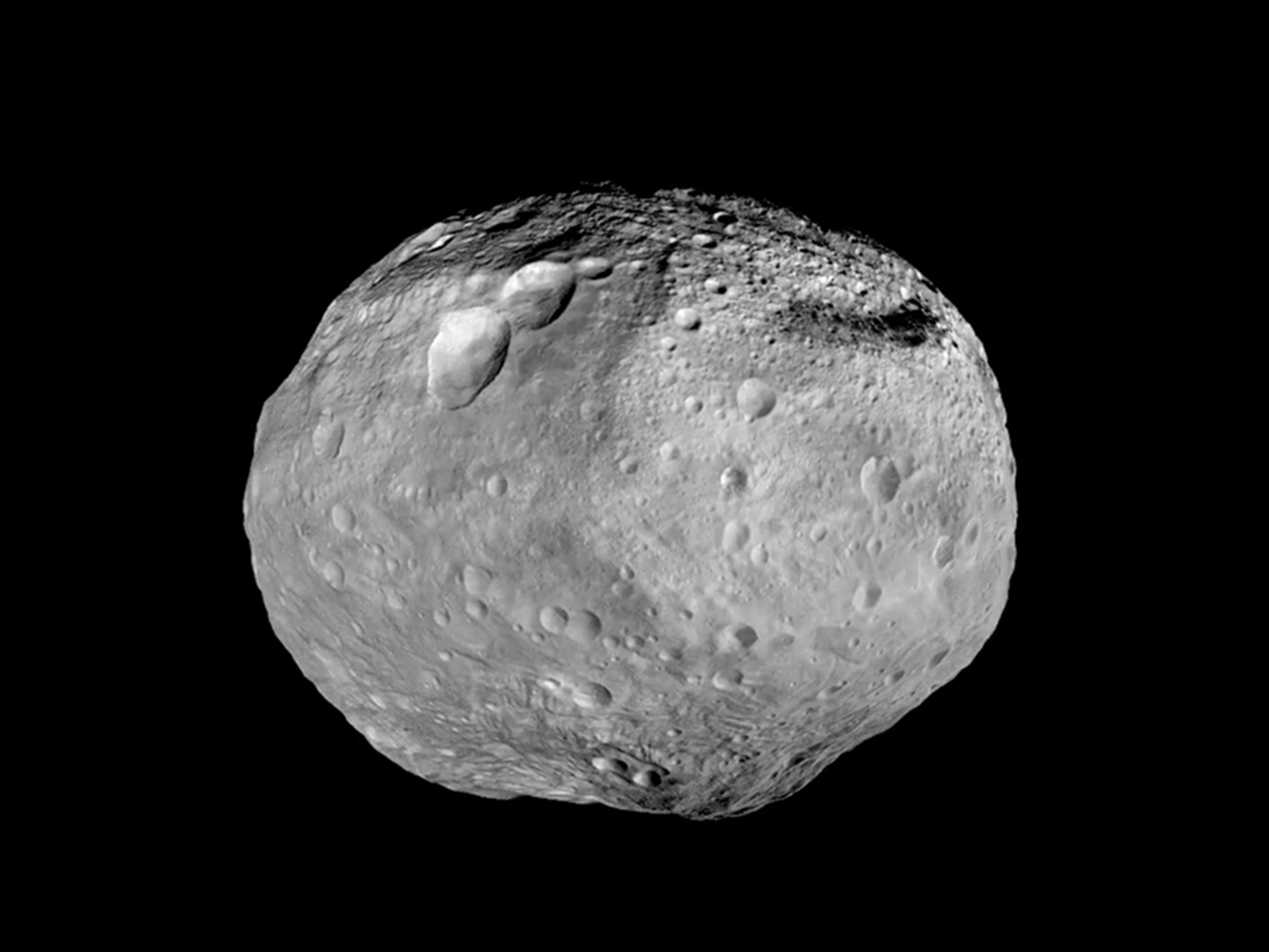
Occasionally, a large asteroid will break apart into many smaller ones, usually as the result of a collision. For this reason, smaller asteroids are far more common than larger ones. Astronomers estimate that only about 1,000 Main Belt asteroids have diameters of over 18 miles (30 kilometers).
Asteroids have a variety of shapes. A large object’s gravitational pull tends to press its mass into a ball. The largest asteroids, therefore, appear roughly spherical. Smaller asteroids have gravitational pulls that are too weak to greatly alter their shapes. They tend to take on irregular, elongated (long and thin) forms. The Main Belt asteroid Kleopatra, for example, has a “dog bone” shape. It looks like two rounded knobs connected by a thin center. Kleopatra measures about 135 miles (217 kilometers) long and 58 miles (94 kilometers) wide.
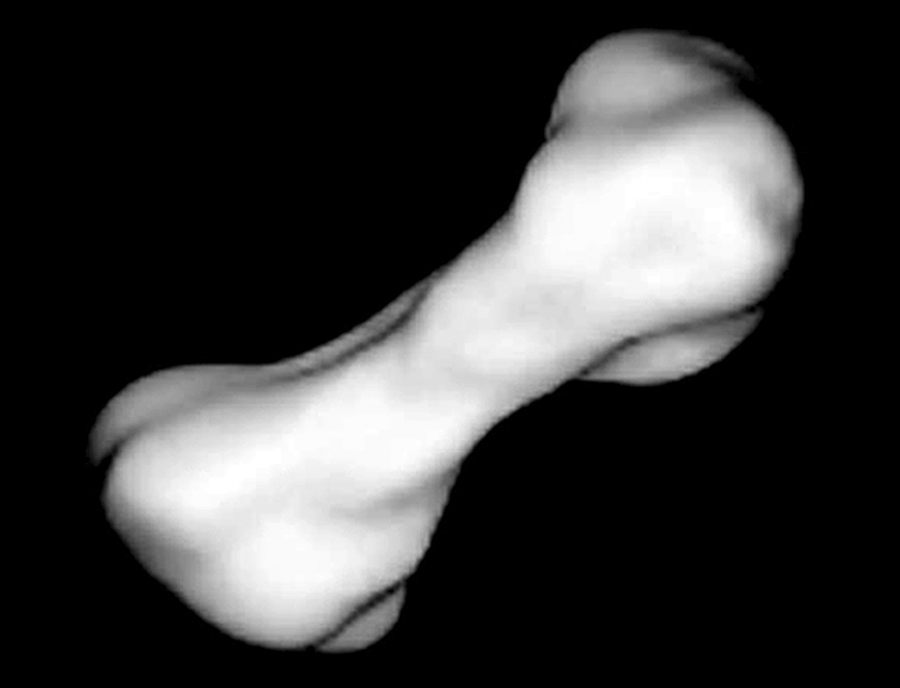
The irregular shapes of small asteroids may result from collisions. Also, scientists think some oddly shaped asteroids may be piles of rubble (broken fragments) only loosely held together by gravity. The relatively small asteroid Itokawa, for example, appears to consist of two physically distinct, weakly bound pieces. Itokawa measures about 0.3 mile (0.5 kilometer) long and about half as wide.
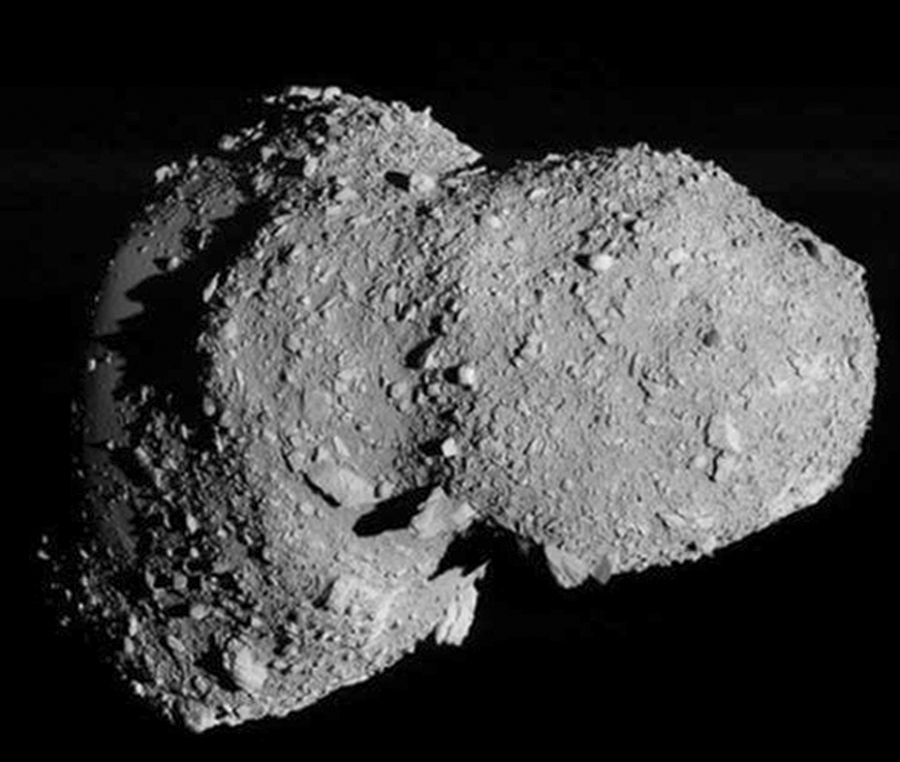
Composition.
Astronomers analyze the light that asteroids reflect to determine the objects’ composition. This technique is called spectroscopy. They also study meteorites thought to be fragments of asteroid material. Astronomers have identified several distinct classes of asteroids. Most asteroids belong to one of three major types—C-type, S-type, and M-type.
C-type asteroids
make up about 75 percent of all known asteroids. They have a rocky composition. The asteroids appear darker than coal. In fact, they resemble a group of carbon-rich meteorites known as carbonaceous chondrites. C-type asteroids have a chemical composition similar to that of the sun. However, they lack the lightest elements, hydrogen and helium.
S-type asteroids.
Scientists classify roughly 15 percent of asteroids as S-type asteroids. These asteroids are bright rocky bodies that also contain some metal. The metal is an alloy (mixture) of nickel and iron called nickel-iron. S-type asteroids consist of nickel-iron and silicates (rock-forming compounds) of iron and magnesium.
M-type asteroids.
Most of the remaining asteroids belong to the third major group, the M-type asteroids. These bright objects consist of nearly pure nickel-iron. They may be fragments of the metallic core of a larger body that broke apart.
Other asteroid types are relatively rare. One such group, the D-type asteroids, occurs more frequently in the outer solar system. They appear more unchanged than asteroids of the inner solar system. The sun’s heat has modified the compositions of the asteroids in the inner solar system.
Orbital groups.
The vast majority of asteroids lie in the Main Belt. The belt stretches more than 100 million miles (160 million kilometers) in width. Most Main Belt asteroids orbit the sun at distances between roughly 2 and 3 astronomical units. An astronomical unit (AU) equals about 93 million miles (150 million kilometers). It is the same as the average distance between Earth and the sun.
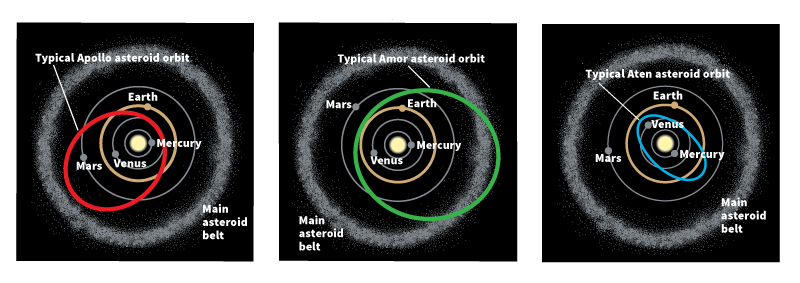
Main Belt asteroids occur in families. These families are groups of tens to hundreds of asteroids that have similar orbits. Some groups, such as the Eos family, share a similar composition. Their common makeup suggests that the members are broken fragments of a larger body or group of bodies. Other families exhibit a variety of characteristics, which suggests that their members do not share a common origin.
An important class of asteroids called near-Earth asteroids follow orbits that can bring them close to our planet. Evidence suggests that near-Earth asteroids were ejected from the Main Belt. Collisions with one another may have knocked them out of the Main Belt. The gravitational influence of Jupiter may have drawn them out. Astronomers classify near-Earth asteroids into three orbital groups, Amors, Apollos, and Atens. The orbits of Amors lie between those of Earth and Mars. Apollos have orbits that cross Earth’s. Atens follow orbits that lie mostly between Earth’s orbit and the sun. Astronomers have discovered more than 800 near-Earth asteroids larger than 0.6 mile (1 kilometer) in diameter. They estimate that about 1,000 such asteroids may exist.
Other asteroid groups lie in the outer solar system. Two groups known as the Trojan asteroids or Jovian Trojans are found in Jupiter’s orbit. In astronomy, a Trojan is an asteroid or other object that shares an orbit with a larger planet or moon. The Centaurs, another group of objects, have orbits that lie between those of Jupiter and Neptune. They typically travel about 5 to 30 AU from the sun. Centaurs share some characteristics with both asteroids and comets. In 2011, astronomers announced the discovery of a Trojan asteroid sharing Earth’s orbit around the sun. Earth’s Trojan is only about 1,000 feet (300 meters) across.
Origin and development.
Because most asteroids lie in a single belt, scientists once thought the objects were fragments of a planet that was destroyed by a massive collision. Today, scientists believe that asteroids are chunks of material left over from the solar system’s formation. The gravitational pull of Jupiter probably prevented these pieces from coming together to form a full-sized planet. Some asteroids may represent the nuclei (cores) of comets that are no longer active.
Asteroids are relatively small and widely scattered. However, their large numbers make collisions inevitable. Repeated collisions can break an asteroid into successively smaller fragments. Eventually, the collisions grind it to dust. Observations of asteroids by spacecraft show surfaces battered by countless impacts.
A collision usually blasts material from an asteroid’s surface. The impact leaves a circular depression called an impact crater. In rare cases, a powerful collision can smash the asteroid to pieces. The fragments may spread apart to form a family of smaller asteroids. Or the larger pieces may recombine under gravitational attraction to make a loose rubble pile. Rubble piles can also form when an asteroid passes too close to a planet and is torn apart by gravitational stresses.
Impacts on Earth.
Earth’s atmosphere protects the planet from most asteroid strikes. Air friction will disintegrate an asteroid smaller than about 160 feet (50 meters) in diameter before it can reach the surface. Objects near the upper end of this size range can still cause some damage. In 1908, such an object exploded just above the ground in the Tunguska River area of Siberia (see Tunguska meteor). The explosion flattened nearby forests and burned an area roughly 50 miles (80 kilometers) across.
Larger asteroids can harm the global environment. The impact of an asteroid with a diameter of around 0.6 mile (1 kilometer) would kick large amounts of dust into the atmosphere. The dust could block sunlight and cool the air for many months. It might even cause widespread loss of crops and starvation.
Even larger impacts may trigger mass extinctions. One such strike occurred about 65 million years ago on Mexico’s Yucatán Peninsula. The impact created the (pronounced Chicxulub << CHEEK shoo loob >>) Crater. This giant impact crater measures about 112 miles (180 kilometers) in diameter. Many scientists think environmental damage caused by the collision led to a mass extinction. The extinction eliminated huge numbers of species, including the dinosaurs.
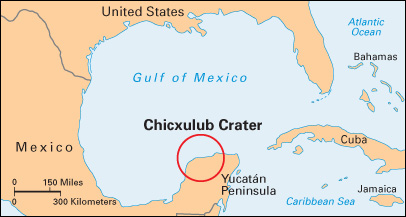
Asteroids large enough to cause global damage strike Earth only about once every million years. The chances of such a strike occurring during the lifetime of any person are extremely small. Several teams of astronomers worldwide are conducting surveys to identify near-Earth asteroids. None of the asteroids yet discovered currently presents an impact danger.
History of study.
In the late 1700’s, astronomers began attempting to prove Bode’s law. The law is named for the German astronomer Johann Bode, who popularized it in 1772. It states that the sizes of the planets’ orbits follow a certain mathematical progression. Bode’s law predicted that an unknown planet existed between the orbits of Mars and Jupiter. In 1801, the Italian astronomer Giuseppe Piazzi identified the first asteroid, Ceres. Ceres’s orbit closely matched that predicted by Bode’s law. Scientists initially considered Ceres to be the “missing” planet. Over the next few years, astronomers found three other large bodies in the same region: Pallas, Juno, and Vesta. Scientists began referring to these objects as asteroids. By the late 1800’s, astronomers had discovered hundreds of asteroids.
In 1891, the German astronomer Max Wolf introduced a new method for finding asteroids. He used a telescope to take long-exposure photographs of the night sky. Asteroids move across the sky so quickly that they appear in the photographs as blurred streaks. Later, astronomers began to search for asteroids by taking two photographs of the same area of the sky about an hour apart. When such a pair of images is viewed with a device called a stereoscope, any asteroids stand out from the background stars.
In the late 1900’s and early 2000’s, scientists became increasingly interested in asteroids. They viewed asteroids both as a source of clues to the solar system’s history and as a suspected cause of past and future disasters on Earth. Through spectroscopy and studies of meteorites, astronomers determined the makeup of asteroids in new detail. In 1996, the Hubble Space Telescope mapped the asteroid Vesta. The mapping revealed a giant impact crater formed a billion years ago. The impact may have created some of the meteorites found on Earth. Astronomers have also studied the shape of asteroids using radio telescopes.
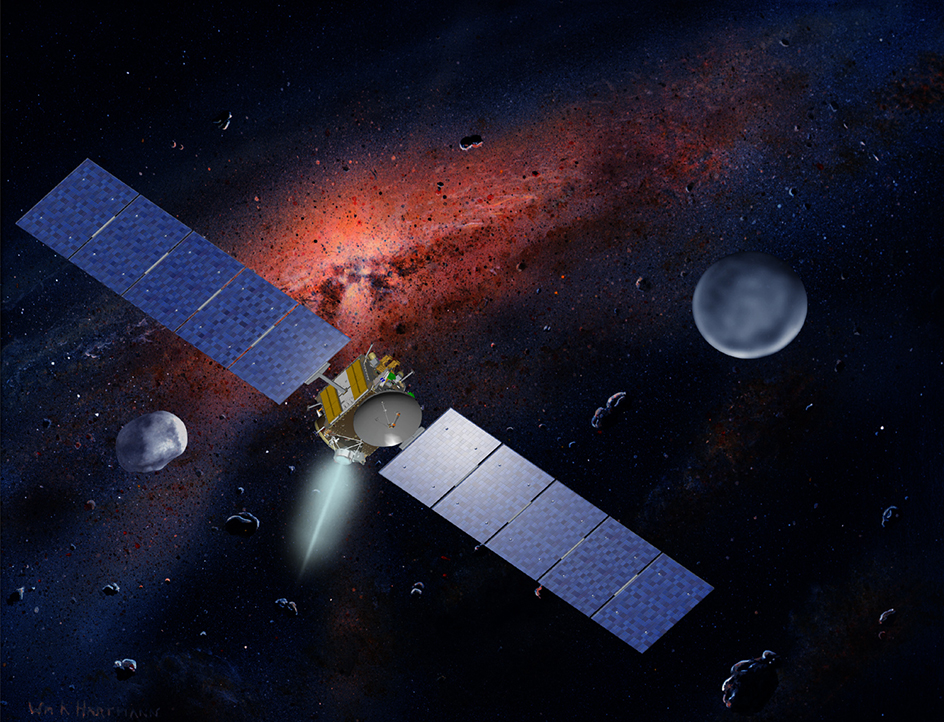
On its way to Jupiter, the United States spacecraft Galileo flew by the asteroids Gaspra in 1991 and Ida in 1993. The flybys enabled scientists to study asteroids up close for the first time. One result of the flybys was the discovery that Ida has a tiny moon, later named Dactyl. Dactyl may be a piece of Ida that broke away during a collision. Astronomers have since discovered satellites around dozens of other asteroids, suggesting that such moons may be common.
In 1996, the United States launched the Near Earth Asteroid Rendezvous (NEAR) spacecraft. The NEAR probe flew by the C-type asteroid Mathilde on its journey to the S-type asteroid Eros. In 2000, the craft, later renamed NEAR-Shoemaker, began orbiting Eros. It studied the asteroid’s surface, orbit, mass, composition, and magnetic field. An object’s magnetic field is the region surrounding the object in which its magnetic influence can be detected. In 2001, NEAR-Shoemaker’s controllers guided the spacecraft to the first-ever landing on an asteroid’s surface.
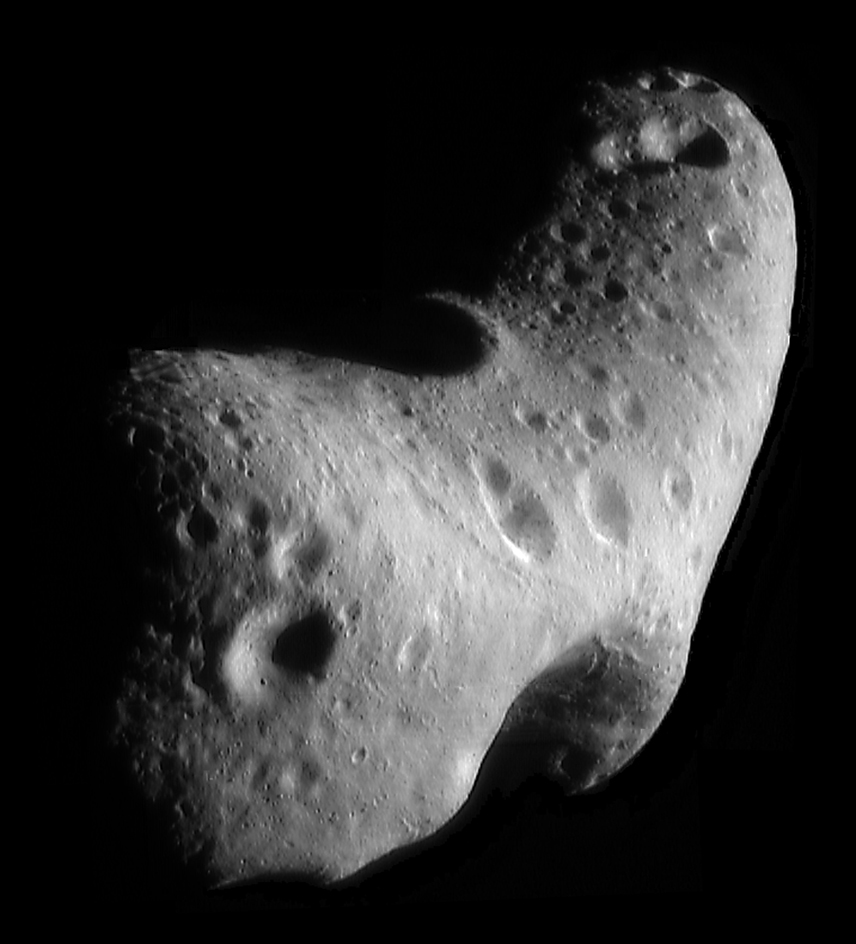
In 2005, Japan’s Hayabusa probe visited Itokawa. Despite the failure of several of its systems, the craft transmitted detailed pictures of the asteroid and landed on its surface. In 2010, Hayabusa returned samples of the surface material to Earth for analysis. The samples were used to determine how the sun’s radiation affects S-type asteroids.
Loading the player...Stardust-NExT flyby
In 2008, scientists spotted an asteroid, later named 2008 TC, on a collision course with Earth. This sighting marked the first time astronomers observed an asteroid in space before it struck Earth. In 2009, scientists announced the discovery of meteorite fragments from 2008 TC in Sudan.
Launched in 2007, NASA’s Dawn spacecraft reached the asteroid Vesta in 2011. Dawn orbited Vesta for one year and then traveled to Ceres, arriving in 2015. In 2016, NASA launched the probe OSIRIS-REx to the asteroid Bennu. The probe’s name stands for Origins Spectral Interpretation Resource Identification Security Regolith Explorer. The probe reached Bennu in late 2018 and collected samples from the asteroid’s surface. The samples were delivered to Earth in 2023.
In 2014, Japan launched the Hayabusa2 spacecraft. In 2019, the probe touched down on a C-type asteroid, called Ryugu, about 1.9 billion miles (3 billion kilometers) from Earth. Hayabusa2 collected samples of the asteroid and returned them to Earth for study in 2020. Scientists analyzed the samples to refine their knowledge of C-type asteroids.
Lucy, a NASA probe launched in October 2021, is the first probe to study Trojan asteroids. Lucy was designed for a 10-year mission and was to reach its first target asteroid in 2025.
On Sept. 26, 2022, NASA intentionall y caused its DART spacecraft to collide with an asteroid. DART stands for Double Asteroid Redirection Test. The collision successfully changed the asteroid’s path through space. DART’s target asteroid, Dimorphos, is not a threat to Earth. But in the future, this method could be used to redirect a threatening asteroid away from Earth. Other NASA asteroid missions launched in the early 2020’s include Lucy, a probe to study Trojan asteroids, and Psyche, the first mission to explore a metallic asteroid. The metallic asteroid to be explored is also called Psyche.
